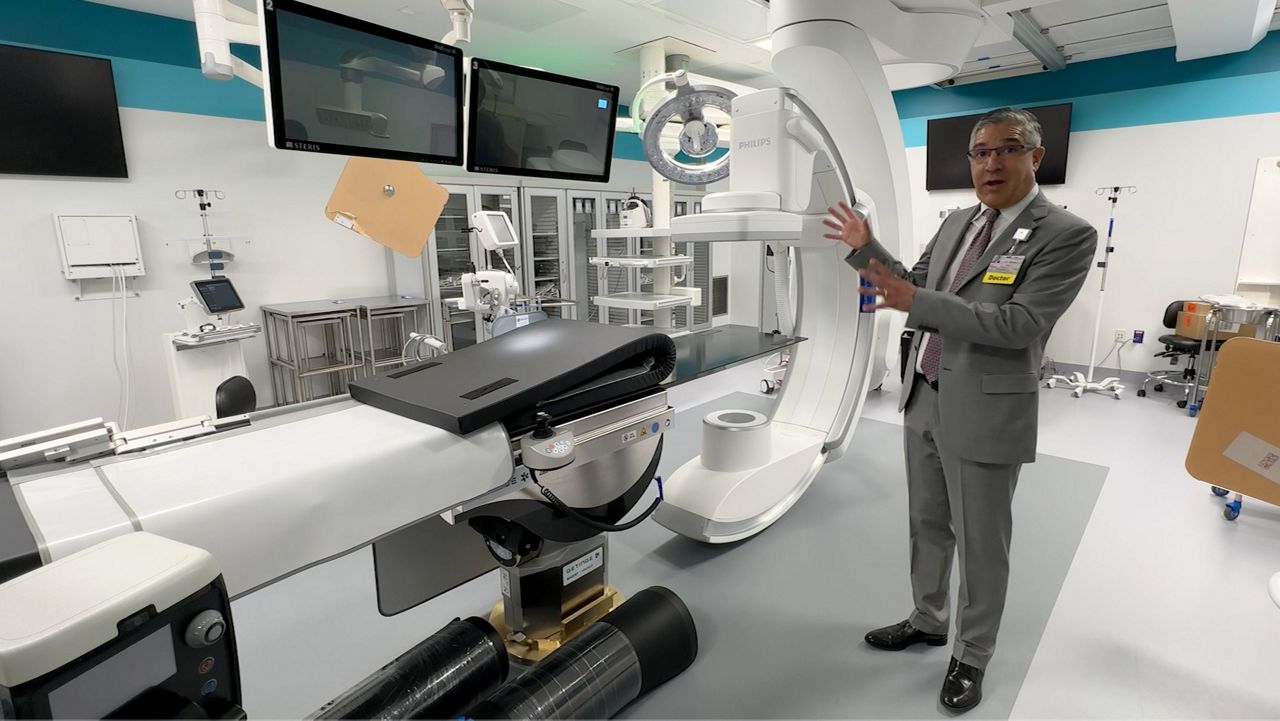MaineHealth’s newest addition to Maine Medical Center in Portland is set to open next month, addressing what executives say is a growing need in Maine for cardiac care.
The Malone Family Tower, a 300,000-square-foot building in downtown Portland, is expected to start accepting patients on June 9. On Thursday, officials unveiled the $378 million building, which will expand the hospital’s capacity for treating patients with heart conditions.
“We wanted to make sure that if anyone needed heart care in the state of Maine, they could get it here,” said Britt Crewse, MaineHealth’s southern region president.
Crewse said right now, the hospital has an average of 120 inpatient heart patients on any given day. Other hospital data shows about 5,000 catheter-based procedures at MMC in a year, including about 600 ablations, or procedures performed to control abnormal heart rhythms.
Data leading up to 2024 was not available, but Crewse said the number of daily cardiac patients has steadily risen in recent years, which is part of what led to the company building the new tower.
“It has been growing for many, many years and we continue to see that,” he said.
The new tower’s glass exterior enhanced its futuristic look, and appeared to provide far more natural light, even on a cloudy day, than most hospital wings do.
The building has 96 rooms for patients, 10 operating rooms, five catheterization labs, 40 rooms for pre- and post-operative care, and a new sterilization department for tools and other equipment.
“The technology is all state-of-the-art,” Crewse said.
Dr. Marco Diaz, chairperson of the hospital’s department of cardiac services, said the new center will perform most of the functions of the hospital’s current cardiac services department, but it will be able to do more of them and do them better.
“It expands our capacity to do more complex work,” he said.
As an example, Diaz described one of several of the tower’s “hybrid rooms.” Many people may be familiar with a hospital performing, say, a computed tomography scan, or CT scan of the heart. Other scans and tests using ultrasound, x-rays, or even a heart-lung machine are not unusual.
A hybrid room, however, can facilitate all those activities, and even do several at the same time. Dubbing the room a “Swiss army knife,” Diaz said the room allows doctors to do diagnostic testing, then convert over to a catheterization lab on the fly. Older cath labs, he said, are usually in separate rooms from where scans are performed. Keeping them together makes it easier for doctors to do their jobs.
“The old cath labs are like flip phones,” he said. “This is sort of like that leap to get an iPhone.”
Most importantly, Diaz added, the hybrid rooms can within minutes be converted into full-blown operating theaters. That way, he said, if something goes wrong during a procedure using a catheter, doctors can switch to open-heart surgery right in the same room.
Crewse said MaineHealth raised about $180 million of the building’s cost through philanthropic donations, including $25 million from donors John and Leslie Malone, one of the largest single donations in Maine Medical Center’s history. Their donation led to the naming of the tower.
Crewse said he and the company want to make sure they will be able to handle the cardiac patient workload expected in the future, and the new tower is a big piece of the hospital’s answer to that problem.
“Yes, no doubt about it, this will help us do that,” he said. “Adding 96 beds certainly is going to help us be able to sustain growth in heart care.”
Article updated to correct building cost.









